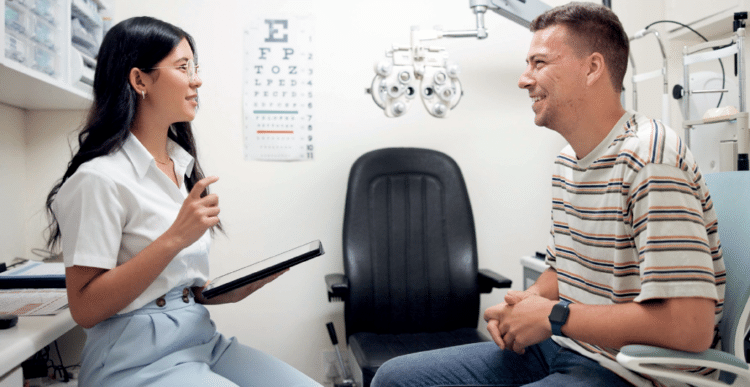Medico-legal advisers often receive questions from practitioners who are considering implementing artificial intelligence note-taking tools in their practice. Avant’s TRACY PICKETT outlines some issues to consider.
One suggested role for artificial intelligence (AI) in healthcare is helping practitioners to meet growing administrative burdens, including capturing accurate records for patients with increasingly complex health interactions.

AI tools can transcribe or record a patient consultation and compile structured clinical notes. As well as forming the basis of the patient’s record, these notes can be re-formatted into other documents such as treatment plans, reports or referral letters.
“If your tool uses an audio recording, make sure you have patient permission before recording the consultation. We recommend getting explicit permission and making a note of this.”
AI tools can also incorporate prompts to help capture key information and assist with prevention or early intervention.
Provided the original record is reviewed carefully by the practitioner, creating multiple documents from the same source data may also reduce the risk of transcription errors.
By removing the need to take comprehensive notes during the consultation, the tools may help practitioners to focus on patients and improve communication.
However, remember the practitioner remains responsible for ensuring notes are accurate and complete.
Key considerations
If you are considering adopting an AI tool to assist with clinical notetaking, consider the following issues.
1. Protecting privacy and confidentiality
You must be confident your patient’s privacy and confidentiality is protected before you upload any of their information to an AI tool. That means checking where the data is processed, where and how it is stored, and how it will be used. Publicly available AI tools may not offer sufficient protection for sensitive data.
If your tool uses an audio recording, make sure you have patient permission before recording the consultation. We recommend getting explicit permission and making a note of this.
If you also use the tool to generate other documents such as reports or referrals, always check these do not breach patient confidentiality and ensure you only copy across clinically relevant information.
2. Is your AI ‘medical grade’?
Not all AI tools are the same. Research is progressing on AI designed specifically for medical applications. However, not all current models incorporate sufficient scientific rigour or have been trained on appropriate clinical data to be able to process medical information in a modern Australian context. AI scribing tools currently fall outside the Therapeutic Good Administration’s medical device regulatory processes.
The tool may have been ‘trained’ on historical datasets and there are indications they may perpetuate historical biases, for example based on race, gender or sexuality. It is important that introducing AI support in healthcare does not reverse progress on addressing healthcare inequities.
Tools may have difficulty understanding accents or language other than standard English.
3. Working with the tool’s limitations
Transcriptions will not capture non-verbal cues or signs. In some cases it may also be inappropriate to verbalise all your observations, for example, if you have concerns about the cause of a patient’s injuries. You will need to ensure these are incorporated into the record.
AI tools may be unable to interpret inconsistent information, for example a patient who says they have no allergies but later mentions an adverse reaction to a medication.
AI tools may also have a tendency to fill in gaps or extrapolate findings, which could lead to a misleading record.
4. Checking the record
Errors in the record will lead to concerns about patient safety and may impact the quality of care.
Always exercise your own professional clinical judgement when using AI tools. Treat any AI-generated outputs as drafts and ensure you review and check them to ensure:
• the record is correct
• the AI has captured and correctly interpreted relevant details
• it has not raised a diagnostic issue you had not considered
• the record captures sufficient detail to justify any Medicare item numbers you have billed for the consultation.
Conclusion
Before selecting AI for clinical notetaking, do your own due diligence in order to be confident that the tool you choose:
• is appropriate for your practice,
• can help you deliver safe patient care, and
• can comply with your legal and professional obligations – including ensuring patient privacy.
Tools are evolving so you must review any tool which you use in your practice to ensure that it remains fit for the clinical purpose and continues to produce the intended outcomes.
About the Author: Tracy Pickett BA, LLB, is a legal and policy advisor for Avant.
More reading
How to handle patient complaints
Advertising standards: Questions to ask yourself




